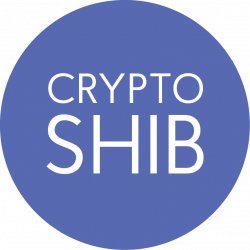BEAM: The Next-Generation Private and Confidential Cryptocurrency

The one reason why the cryptocurrencies managed to gain a huge consumer appeal is its feature of anonymity. However, digital assets powered by the blockchain technology usually have an open and public ledger of its transactions. A significant downside to this is that privacy is often compromised.
Even though Bitcoin promises to have some privacy features, it is yet not completely so. Several analytics companies have managed to tap into the public blockchain networks like Bitcoin while clustering addresses and tying them to users IP addresses or other identifiable information.
As a result, the demand for “privacy coins” is growing rapidly. One such privacy coin is BEAM which is powered by the Mimblewimble protocol. An anonymous developer with the identity of “Tom Elvis Jedusor” first proposed this cryptographic protocol which addresses both the issues of confidentiality and scalability.
Understanding the Mimblewimble Protocol
Two years back in August 2016, the anonymous developer Jedusor first published a whitepaper for Miblewimble which basically resembles a radically toned-down version of the Bitcoin protocol. Furthermore, the whitepaper talks about developing an efficient and confidential blockchain network.
The Mimblewimble protocol is developed using two concepts initially proposed by Greg Maxwell. The first one is called Confidential Transactions (CT). It allows users to hide the amount involved in a transaction for third parties. Hence, only the sender and the receiver are aware of the sum of money. However, a cryptographic trick dubbed as Pedestrian commitment allows other people to perform some calculations on the blinded amount. However, this just lets them verify that the sending and receiving of transactions is equal. It helps to ensure that no additional tokens are created out of thin air.
The second is the CoinJoin concept wherein several transactions are combined into a single big transaction. Here, all senders can send money to all the receivers. If done properly, this will blur the information on which addresses (“inputs”) are paying which addresses (“outputs”).
The protocol replaces the traditional signature for each transaction with the “excess transaction data” that proves the ownership of the coins. Furthermore, another special feature of the Mimblewimble is that it allows old and new transactions to cancel out against each other. This allows for old transactions to be forgotten. As a result, new nodes don’t need to sync to the whole blockchain and thus the amount of information stored by each node reduces drastically in comparison to other typical blockchains.
With other blockchain networks, privacy and scalability always remain in conflict. However, Mimblewimble manages to effectively walk with them together.
Details Regarding the BEAM Cryptocurrency
BEAM is a completely decentralized cryptocurrency with the strong ethos for privacy, scalability, and fungibility. As powered by the Mimblewimble protocol, the BEAM transactions are private by default and it doesn’t require the complete history for blockchain validation. This considerably reduces the blockchain size while improving scalability.
The BEAM cryptocurrency supports several types of transactions like the atomic swaps, time-locked transactions, and escrow transactions. The BEAM project adopts Equihash mining feature that is widely accepted by global miners. The Equihash protocol is IO bound. It means that as opposed to Bitcoin SHA256 which require huge processing power, Equihash demands a large amount of memory. Equihash doesn’t facilitate an easy trade-off between memory and processing power. As a result, it makes itself difficult to be used with ASIC miners.
Thus the mining of BEAM blocks is done using the memory-hard Equihash Proof-of-Work algorithm. The average block time is 1 minute. Moreover, the BEAM project has got Graphical Wallet Applications for all platforms like Windows, Mac, and Linux.
The non-profit BEAM Foundation will look after the maintenance of the BEAM project. There is no premising or ICO. Both the Foundation and the Core Team are funded through a block reward mechanism. This allows certain coins getting eliminated from every newly mined block.
The BEAM main net is expected to launch by the end of December 2018. By the launch time, the BEAM project is willing to have a full-fledged desktop wallet with additional integration with other hardware wallets. The future roadmap of the company includes Dandelion integration, mobile wallets, confidential assets and much more.
